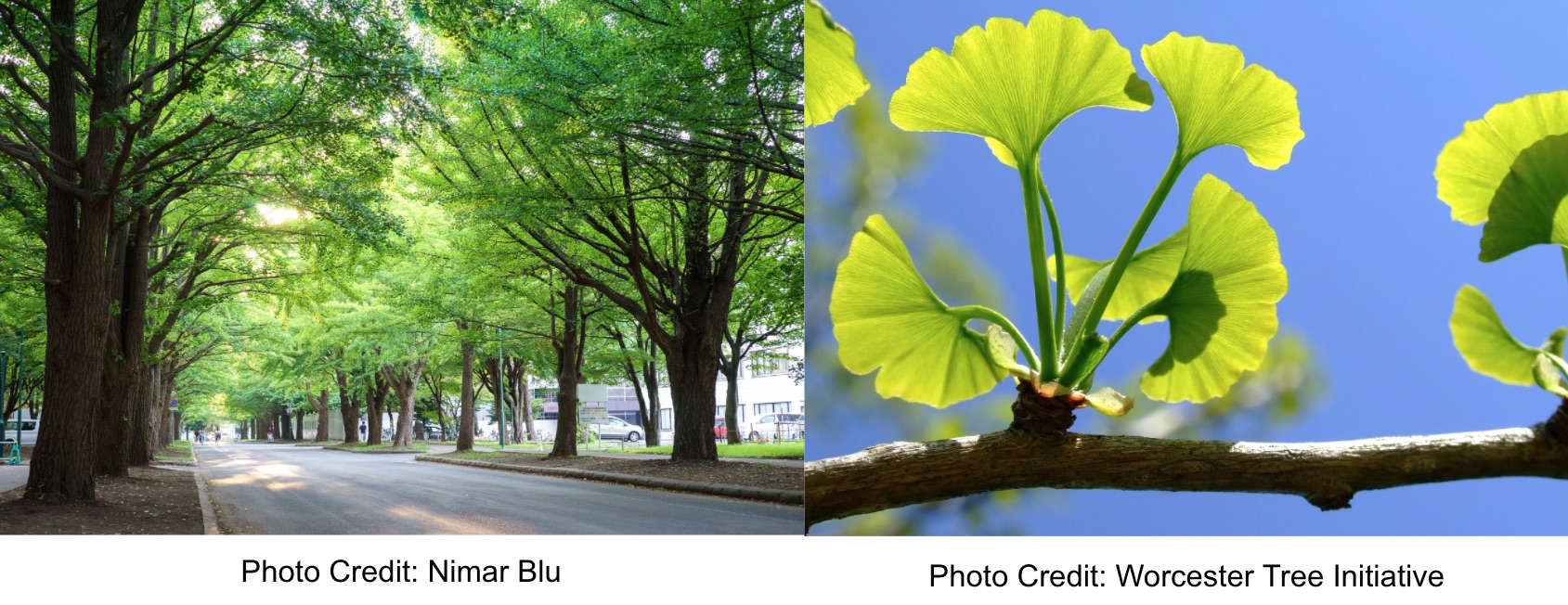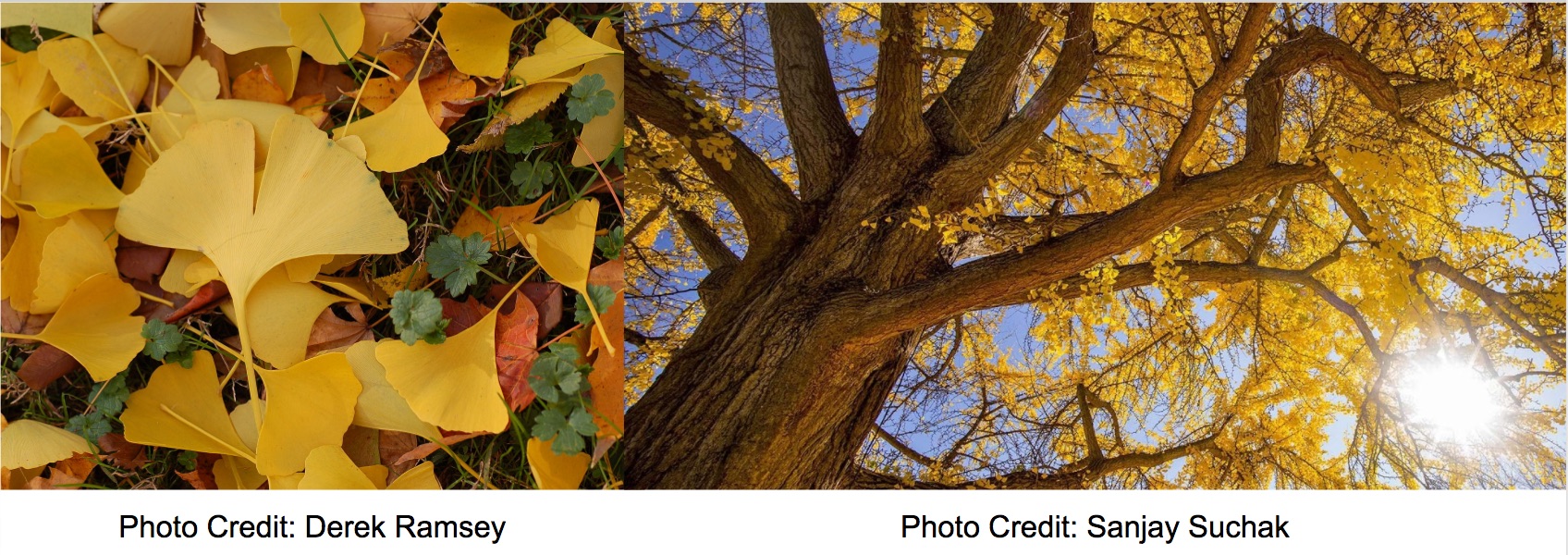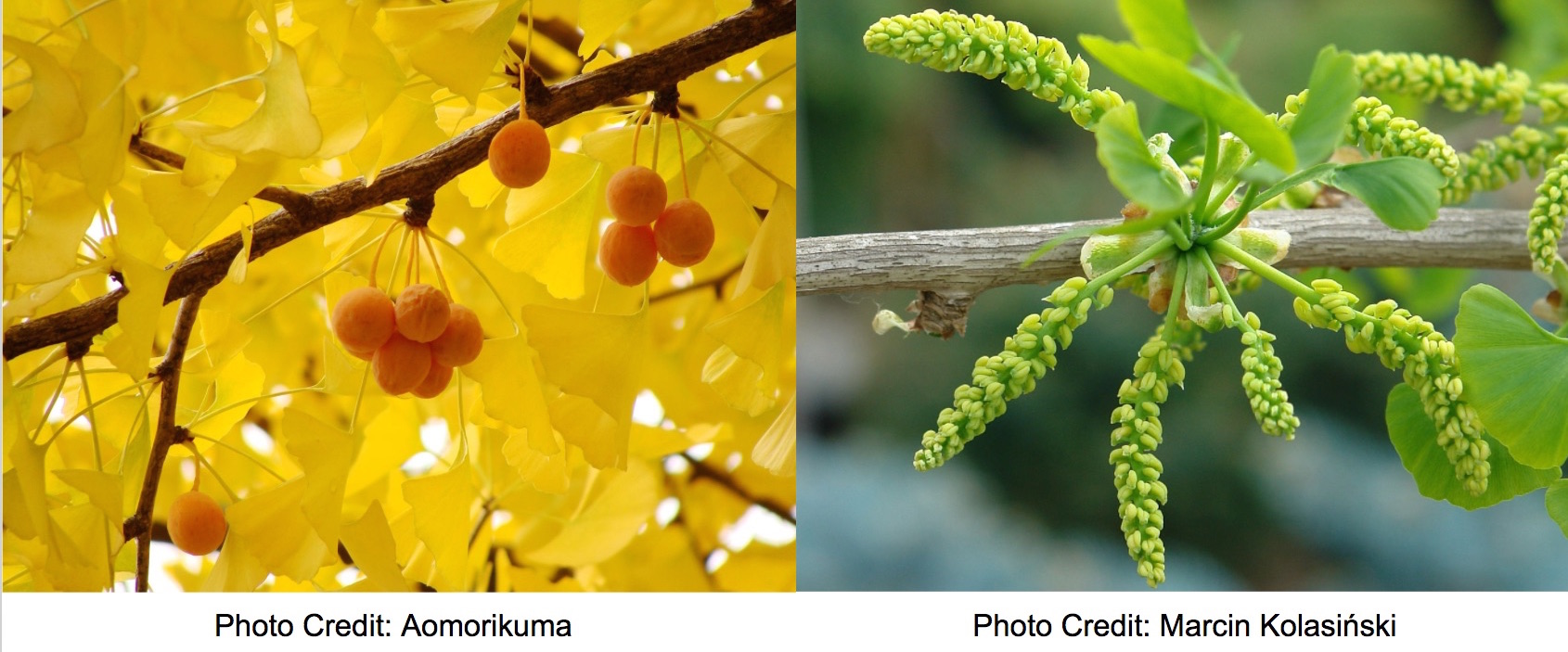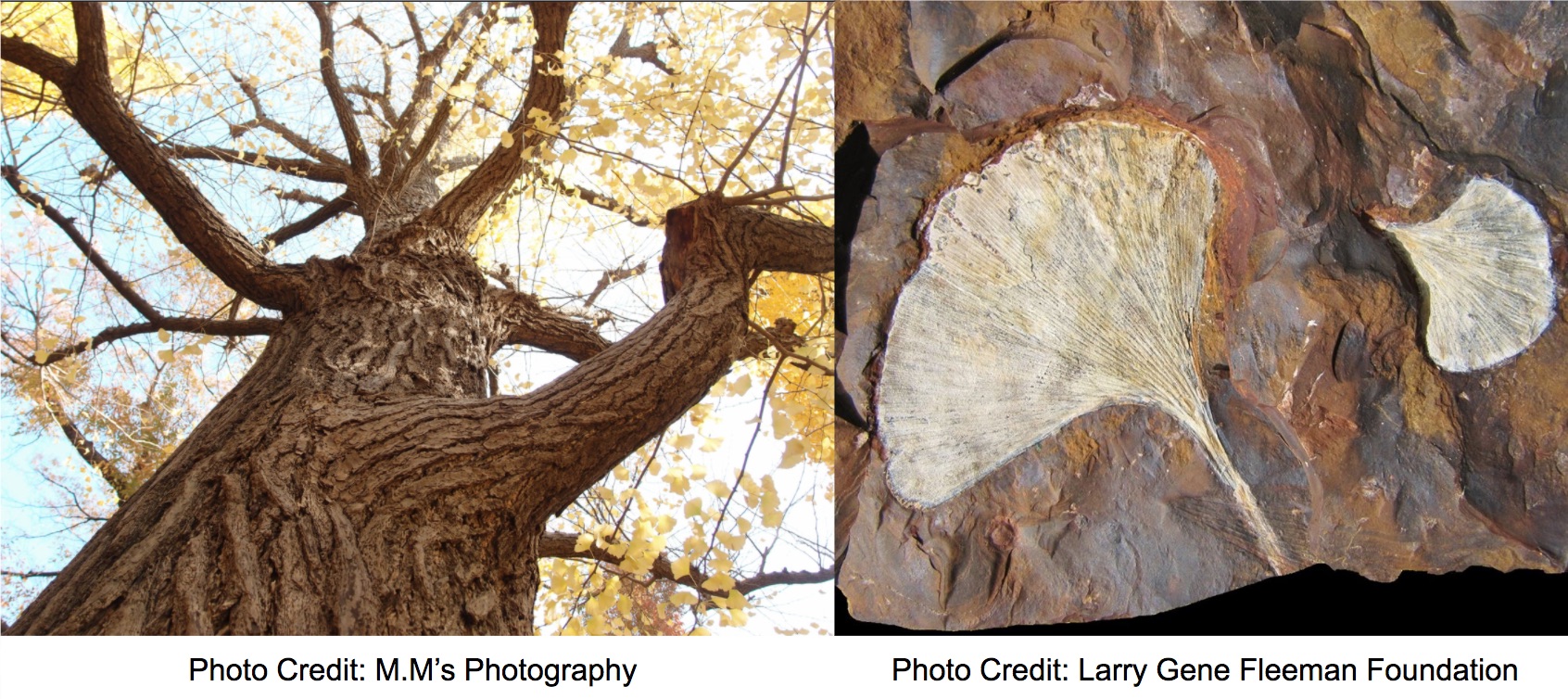By: Natalie Hamilton
Ginkgo biloba, commonly known as the ginkgo tree or the maidenhair tree, can be incredibly beautiful to see in an urban setting. Their unique fan shaped foliage, bright yellow autumn colors, and mature spreading branches immediately make them stand out from other common trees. Although this slow- to medium-growing tree is native to China, it performs very well in the Midwestern climate, which has made it a more common species to see in Minnesota.
Ginkgo trees will grow 50-80 feet high, are tolerant of a variety of harsh site conditions, are disease and pest free, and are long lived. For these reasons, the ginkgo is commonly planted as a dependable boulevard or shade tree. These trees are also planted as ornamental trees because of the uncommon characteristics they display. Ginkgos produce unique branch spurs from which their bright green fan-shaped leaves grow from. These spurs, along with their textured light grey and brown wood, make ginkgos interesting to see even in the winter months when their leaves are absent.
Female ginkgo trees produce seeds with fleshy coverings. When those fleshy coverings begin to ripen in the autumn, they produce a foul and pungent scent, which is often compared to the smell of dog feces. Because of this undesirable characteristic, male selections of ginkgo are more often commercially sold. The only issue with this is that a ginkgo tree can actually take decades to express its sexual maturity. Occasionaly ginkgo trees will begin to produce seeds even though they were sold as males. This is because they were mis identified when they were sold and are actually female trees.
A living Fossil: Fossilized ginkgo leaves have been found that date back to an astounding 270 million years ago. Modern-day ginkgo leaves look almost unchanged compared to those of their ancient ancestors. This gives them the fitting nick name of being true living fossils.
All photos and references are used for educational purposes only
References
- Chase, Jeri. "The Ginkgo - a True “living Fossil” (GINKGO BILOBA)." Forests for Oregon 2007: 17-19. Print.
- Koetter, Rebecca, and Kathy Zuzek. "Ginkgo (Ginkgo Biloba)." University of Minnesota Garden Extension. University of Minnesota, 2016. Web. 17 Feb. 2017. <http://bit.ly/2lWFxMW>.
- "Ginkgo – Ginkgo Biloba." The University of Alabama Arboretum. The University of Alabama, n.d. Web. 17 Feb. 2017. <http://bit.ly/2ltePhr>.
- "Ginkgo Biloba." Missouri Botanical Garden: Plant Finder. Missouri Botanical Garden, n.d. Web. 17 Feb. 2017. <http://bit.ly/2m5w7Ol>.
Photos
- Blu, Nimar. Ginkgos on the Hokkaido University Campus. Digital image. Inhokkaido. N.p., 28 Oct. 2014. Web. 15 Feb. 2017. <http://bit.ly/2l3GR24>.
- Ginkgo leaf attachment. Digital image. Tree of the Week Theme: Cold Weather Champions. Wercester Tree Initiative, 26 Sept. 2016. Web. 17 Feb. 2017. <http://bit.ly/2lfTOnR>.
- Ramsey, Derek. Ginkgo Tree Ginkgo Biloba Fallen Leaves. Digital image. Wikimedia Commons. Wikimedia Commons, 23 Nov. 2007. Web. 17 Feb. 2017. <http://bit.ly/2kyehqV>.
- Suchak, Sanjay. UVA’s Pratt Ginkgo. Digital image. UVA Today. University of Virginia, 17 Dec. 2015. Web. 17 Feb. 2017. <http://bit.ly/2l3ESKR>.
- M.M's Photography. Ginkgo. Digital image. Flickr, 2 Dec. 2013. Web. 17 Feb. 2017. <http://bit.ly/2ky5Bko>.
- Fossil Ginkgo Leaves. Digital image. Fossil Ginkgo Leaves- Sentinel Butte Formation, Morton County, North Dakota. Larry Gene Fleeman Foundation, 2 Dec. 2013. Web. 17 Feb. 2017. <http://bit.ly/2kHZQvI>.
- Aomorikuma. Ginkgo (Japan). Digital image. Wikimedia Commons. Wikimedia Commons, 3 Nov. 2007. Web. 17 Feb. 2017. <http://bit.ly/2m5AqJh>.
- Kolasiński, Marcin. Maidenhair tree - male flower. Digital image. Wikimedia Commons. Wikimedia Commons, 28 Apr. 2010. Web. 17 Feb. 2017. <http://bit.ly/2kSAUSV>.



